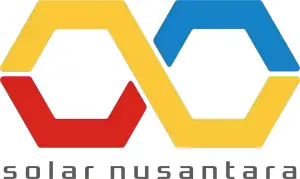The Solar Energy Market Trend
The solar energy market is growing rapidly and the solar industry is projected to grow about 20% annually. This growth is primarily due to the fact that solar panels are becoming more affordable and accessible to the general public.
In 2008, the global average price for solar panels dropped from $5.29 per watt to $2.59 per watt. The following year, the average price dropped to $1.99 per watt and has been decreasing since then.
The cost reduction is mainly due to technological advancements as well as significant reductions in production costs and economies of scale.
The cost reduction is mainly due to technological advancements as well as significant reductions in production costs and economies of scale.
The solar market in the US has grown rapidly in recent years, with global demand for solar panels now exceeding supply by more than 5,000 MW. Other countries experiencing significant growth in their domestic markets are Japan, Germany, Italy, and China. Ireland, which had a total installed capacity of 167 MW on December 31, 2011 (up from <10 MW in 2008), is also a growing market.
In the first half of 2015, global PV demand growth exceeded 50%, and the global PV trade deficit decreased to $2.9 billion from $7.8 billion during the same period.
The US solar energy market is driven by a number of policies implemented at both the federal and state levels, such as the Investment Tax Credit and renewable portfolio standards.
On November 30, 2016, the United States was the third largest photovoltaic energy producer in the world, after China and Germany.
The US installed capacity reached 49 GW in 2015, up from 25 GW in 2014 and 22 GW in 2013. Solar energy currently provides 1% of US electricity.
The US installed capacity reached 49 GW in 2015, up from 25 GW in 2014 and 22 GW in 2013. Solar energy currently provides 1% of US electricity.
The solar power generation industry accounts for 2% of all power generation in the US and is growing at a rate of about 20% annually, with more than 150,000 Americans employed in solar-related fields as of September 2016. The Solar Energy Industries Association predicts that by 2022, solar energy will account for 3% of the national electricity supply.
According to projections made in 2006 by the International Energy Agency, solar power generation capacity could grow 40% annually until 2013 and will represent 3% of global power generation by 2050.
Solar Panel Batteries and Increasing Demand!
Solar panel batteries are determined by consumer needs, but most people choose lithium-ion batteries for higher efficiency. Lithium-ion batteries are more expensive than solar panel batteries, but they have a longer lifespan and can be recharged.
The cost of solar panel batteries is not the only factor consumers consider when making their decisions. Some people may choose to use solar panel batteries because they want to save money in the long run, while others want to use renewable energy sources and support cleaner energy.
Some argue that solar panel batteries have a better environmental impact than lithium-ion batteries due to their negative effects on the environment, such as depletion of natural resources and greenhouse gas emissions.
Batteries are an integral part of a solar system because they store energy from the sun that has been converted into electricity by the panel. To maintain a constant supply of electricity, a storage device is needed to hold excess energy when it is not needed. This can be achieved by using a grid-tie inverter or battery storage system.
A grid-tie inverter is a device that converts the direct current (DC) output of solar panels into alternating current (AC) electricity and feeds this directly into the utility grid. This can be done because the device is directly connected to the utility grid. However, they cannot store energy when there is not enough demand, so a battery storage system is required for that purpose.
In conclusion, the solar energy market is rapidly growing and has the potential to become a major contributor to the world’s energy mix. The decreasing cost of solar panels and the increasing demand for clean energy sources are driving this growth. The development of solar battery technology also plays a crucial role in making solar energy more efficient and reliable. As we continue to explore and invest in renewable energy sources, we can work towards a more sustainable and environmentally friendly future for generations to come.


